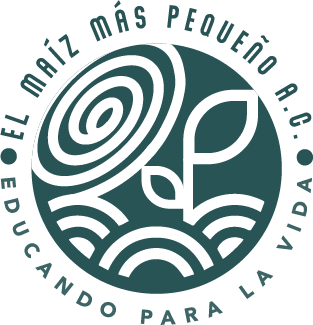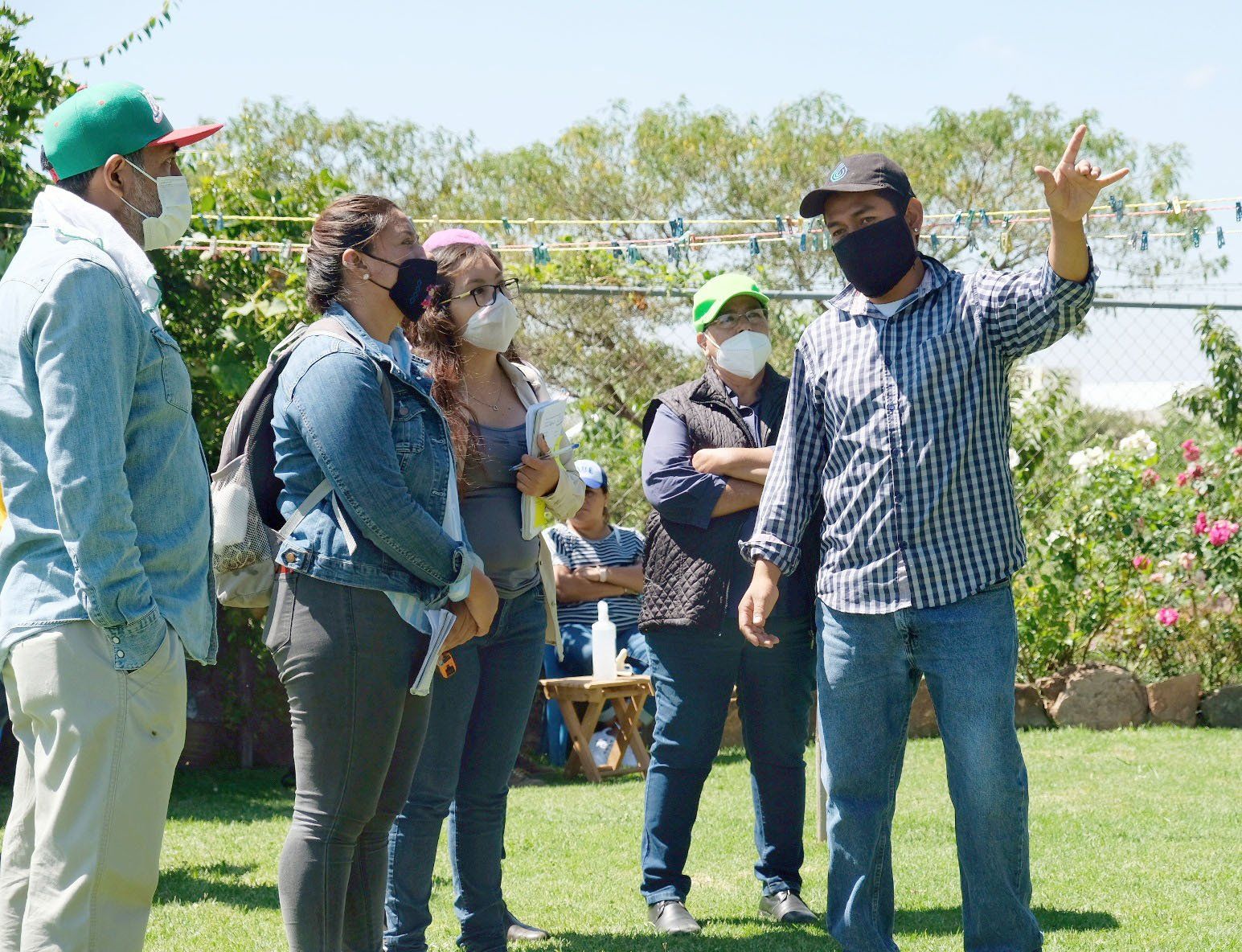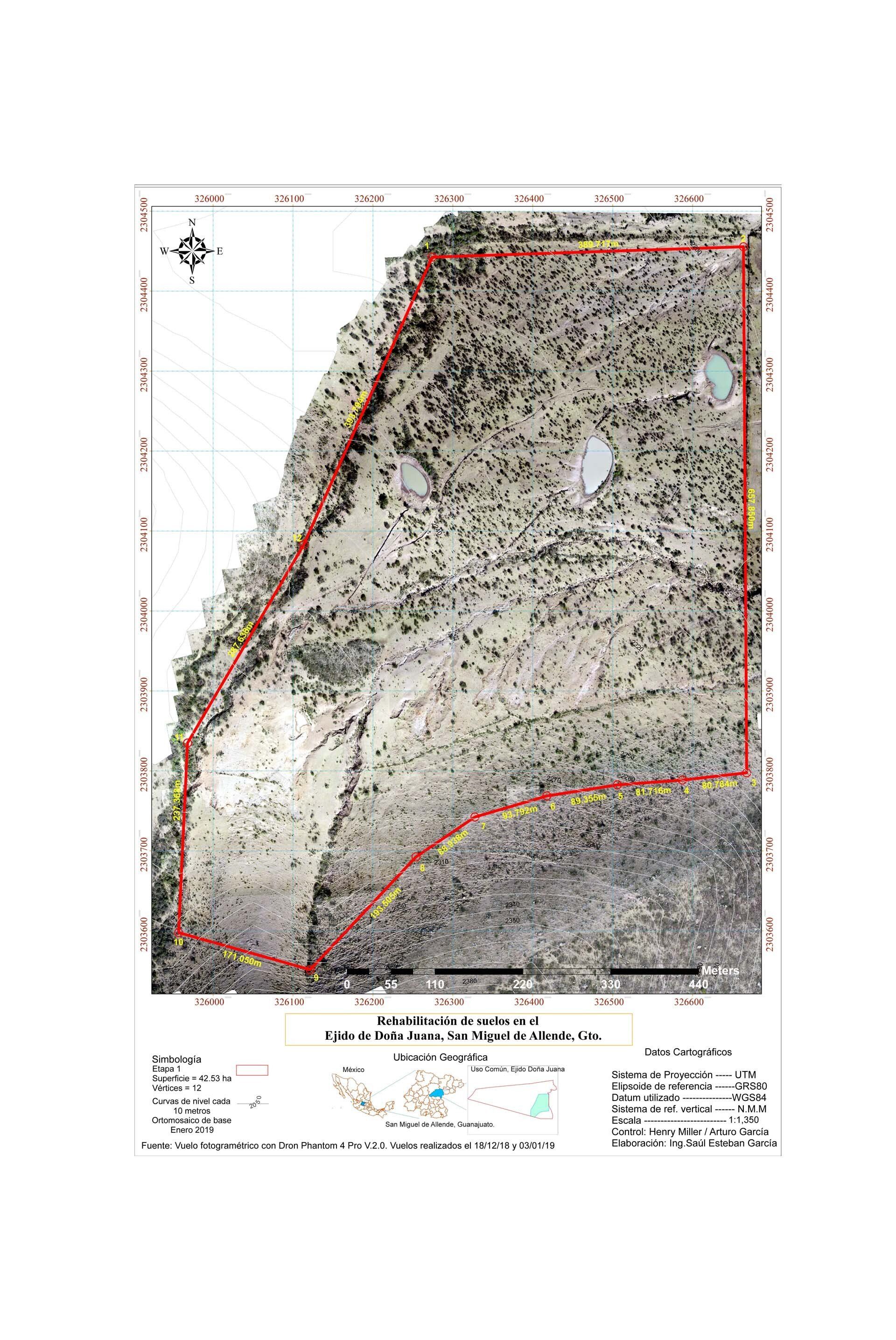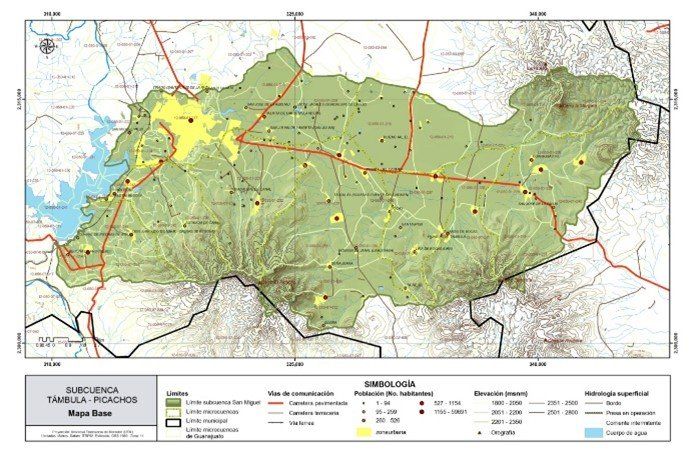Projects with the community
Project for the installation of backyard orchards and rainwater harvesting systems in highly and very highly marginalized localities
The project "Installation of backyard gardens and rainwater harvesting systems in localities with high and very high marginalization" was carried out between the months of August and November of the year 2020, with resources from the Secretariat of Agricultural Development of the State of Querétaro (SEAT). The general objective of the project was to support the actions of orchards and rainwater harvesting, through the training of promoters and agents in rural areas, to integrate their actions within the framework of Food Security, with a perspective of basins as a system of life and with a vision of planned community agroecological ordering.
The purpose of participating in collaboration with SEDEA was to use both the process and the installation of the demonstrative modules of Orchards and Rainwater Harvesting Systems (HSCALL), as didactic instruments that would allow the triggering of community processes of agroecological production and management. territorial planning, with a vision of Basins as a Life System.
During the project, 40 demonstration modules were installed in 40 locations located in seventeen municipalities in the state of Querétaro, under pandemic conditions, which implied a major challenge. Likewise, workshops and training were given to promoters and agents in rural areas on issues related to agroecological practices and adaptation to climate change.
It is very important to highlight the impact that this project had at the level of the sociocultural and demographic diagnoses made for each of the 4 regions that make up the State of Querétaro for SEDEA and likewise, the cartographic document with 40 maps of each of the micro-watersheds, prepared by El Maíz Más Pequeno and which was considered highly relevant by the Secretary of Agricultural Development Ing. Carlos Heinz Dobler Mehner as strategic information for decision-making.
Intervention project in the Ejido Doña Juana: Cuenca as a Life System
Within the framework of the "Watersheds, people, water and climate change" project, the intervention project was carried out between the end of 2018 and the beginning of 2019 in the Ejido Doña Juana: Cuenca como Sistema de Vida, located in the Sosnabar micro-watershed. , San Miguel de Allende, Guanajuato, Mexico. The objective was to raise awareness, educate and train the population to carry out a process of ecological restoration of soils that involved payment of wages, collaborative management and territorial management from a perspective of watersheds and social metabolism.
In this project we have the collaboration of the Doña Juana Ejido and community, Guanajuato AC Conservation Corps, Save the Laja River AC, the San Miguel de Allende Municipal Department of the Environment, thesis students from the forestry career at ITESI Campus San Felipe and postgraduate students in Sustainability Sciences at UNAM Campus Morelia.
What was relevant in this project was the strategy used and derived from the learning of the "Watersheds, people, water and climate change" project, in which the local population was integrated in the search for the solution of problems and the formulation of interests regarding to the territory, so that their subsequent actions, that is, participation, occurred in a less mechanical or passive and more autonomous way.
This work involved a great analytical effort on the part of Maíz Más Pequeño AC, because the nature of the awareness meetings had to also obey a kind of rapid diagnosis in which we detected leadership, the environment and the interests that permeated the community in order to direct the work of convincing around the objectives and interventions of the project.
Intervention actions were implemented in the physical environment in 42 hectares to stop soil erosion, rehabilitate gullies, retain moisture and provoke the induced regeneration of native flora species; which will promote in the short term the pluvial catchment, the recovery of the functions and environmental services of the sub-micro-basin for the benefit of its population and as a habitat for wildlife.
Project Impacts
The rehabilitated soil surface was 42.53 hectares. In qualitative terms, the project managed to be appropriated by the people of the community, generating high levels of participation and involving actors from different government structures, strengthening local governance.
The culmination of this project consisted in the recognition of El Maíz Más Pequeño AC as a specific actor in the GIZ / ADAPTUR Project and by the National Institute of Ecology and Climate Change as an example of adaptation to climate change based on the rehabilitation of ecosystems, participating in the publication of this work in the project called "Construction of adaptation monitoring and evaluation schemes in Mexico for the formulation of evidence-based public policies" of INECC - CONACYT (2020).
An important impact was also obtained at the educational level through the implementation of collaborative actions for the improvement and care of health and the environment at the secondary and high school levels, as well as the strengthening of the “School Republic” program, which was recognized by the Delegation Regional Education North of the State of Guanajuato. This drives our purpose as an organization for the construction and integration of a training system related to climate change issues within public education and the creation of a productive and administrative generational relay of the territory through the participation of youth in our activities.
DOÑA JUANA, MORE THAN A BASIN
FOR THE CITY OF SAN MIGUEL DE ALLENDE
SOIL REHABILITATION IN THE DOÑA JUANA EJIDO,
SAN MIGUEL DE ALLENDE, GUANAJUATO
Cuencas, people, water project
and climate change: adaptation processes in the Támbula-Picachos sub-basin in the Alto Río Laja
The project "Watersheds, people, water and climate change" aimed to generate an intervention and management model for the rehabilitation of the Támbula Picachos Sub-basin belonging to the Alta del Río Laja sub-basin in the municipality of San Miguel de Allende, Guanajuato, Mexico. . It was executed between 2015 and 2019 with a duration of 36 months and was financed by the Fundación Gonzalo Río Arronte IAP as part of its Water Program. The Autonomous University of Querétaro participated in this project through the Master's Degree in Integrated Watershed Management, as well as other civil organizations in the region that collaborated in specific activities.
This project followed up on the initiatives of the Ecology Directorate of San Miguel de Allende (administration 2006-2009), the work of the thesis students of the Master's Degree in Integrated Watershed Management and the strategic plan for the management of the Sub-basin Alta del Río Laja (2013). This sub-basin is part of the Lerma-Chapala basin, one of the most important in Mexico and whose degree of contamination and overexploitation is worrying. In turn, the Alta del Río Laja sub-basin is one of the most preserved, but it is also threatened by urban expansion.
The rehabilitation processes carried out during the project were based on 5 axes or actions: 1) Organization, 2) Training, 3) Rehabilitation, 4) Education and dissemination, and 5) Evaluation and monitoring. Hard work was done with the people of the localities settled in the sub-basin to raise awareness about the basin as a way of life, strengthen social organization, people's decision-making capacity, participatory learning, good practices in the management of basin and education in ways of life.
Project Impacts
The number of beneficiaries was 10,261 people (2016-2019). The most important impacts were recorded in the participation of the population through the installation of rainwater harvesting systems and orchards in homes and schools, soil regeneration and the installation of an agroforestry nursery for the propagation and planting of adapted plant species. to the climatic and edaphological conditions of the region, prioritizing species with productive potential for food, fodder, wood and with low water requirements, promoting the design of edible landscapes with economic and productive projections.
In terms of public policy, it was possible to participate in the municipal planning councils and integrate "territorial management from a basin perspective" in the governing documents at the local level and the conceptual understanding of these documents by the inhabitants of the communities and owners of the territory. As a result of all the previous activities, recognition was obtained from the Municipal Civil Protection Unit for the impact that the project's actions had on comprehensive risk management, since care for the intermediate area of the basin mitigates hydrometeorological risks in low-lying areas, particularly in the city of San Miguel de Allende. Likewise, recognition was obtained from the German Cooperation Agency for Sustainable Development (GIZ) for the positive impacts in the implementation of adaptation measures to climate change based on ecosystems, which are the focal point of its ADAPTUR project in San Miguel. from Allende.
Food Security Program Project (PESA/FAO)
During 2013 and 2014, members of El Maíz Más Pequeño collaborated with the Food and Agriculture Organization of the United Nations (UN/FAO), within the UTF/MEX106 project “Strengthening the strategy of the Strategic Food Security Program ( PESA), Proposal for a System of Monitoring and Evaluation of Operation Processes and Results”. The focus of this collaboration was to strengthen the Food Safety Program and decision-making between work groups and technology transfer of the biointensive farming method to technicians and producers in the states of Puebla, Hidalgo, State of Mexico, San Luis Potosí , Nayarit, Michoacán, Guerrero, Morelos, Chihuahua, Veracruz, Oaxaca and Chiapas.
The methodology developed by El Maíz Más Pequeño to attend to the socio-environmental diversity of the scenarios of each region was based on two steps:
one. Human training to identify and connect with external and internal factors that influence our actions and ability to make decisions in favor of food production and community organization.
two.Technical training for the transfer of knowledge related to food production in small spaces applying the biointensive farming method, taking into account the specificities of each community and/or agency and their agroecological characteristics.











